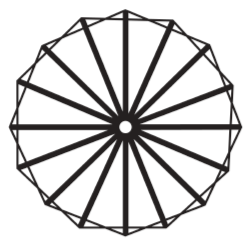
Recently one of the members of our Metta team, Stephanie, came across a fascinating article by Peter Miller from National Geographic about so-called “swarm theory”. It’s the theory that for some species such as bees, ants, fish, caribou, or birds, group intelligence dominates behavior rather than individual intelligence. This group intelligence has proven to be significantly more sophisticated and complex than one might expect.
In the attempt to analyze swarm behavior, researchers have made simulations using computer models. They have applied these models to complex systems in the industrial world like truck fleet delivery routes and complicated phone networks. These applications, inspired by colonies of ants and bees, have yielded impressive improvements in efficiency for the systems and the companies that have implemented them.
In these cases, techniques that make up swarm intelligence have been quantified and applied, but what else could we learn from this brilliant way that creatures in swarms work together to live their lives? Is there some capacity in humans, who are part of this vast group, seven billion strong (and counting), not only to emulate, but to tap into the swarm intelligence we see in the birds and the bees? Are humans capable of operating as a swarm to tackle the immense problems facing our shared planet?
This question is paramount in our exploration of and advocacy for peace. The reason swarm behavior works so well to tackle problems, the reason it’s so completely efficient, is in large part due to the harmony among its members. Each member plays her own part in order to bring about the success of the group, and thus her own success as well.Often these situations are about survival. Miller discusses a study involving a wolf chasing after a herd of Porcupine Caribou in Alaska. Miller writes
“For each caribou, the stakes couldn’t have been higher, yet the herd’s evasive maneuvers displayed not panic but precision. (Imagine the chaos if a hungry wolf were released into a crowd of people.) Every caribou knew when it was time to run and in which direction to go, even if it didn’t know exactly why.”
One feature of swarm intelligence that this article doesn’t address, but is apparent in the example of the caribou, is the implicit necessity of self-sacrifice. Any individual who is a part of a swarm must, ultimately, be focused on the group intent rather than his own, the group survival rather than his own, the group “plan” rather than his own. This requires an element of humility in action, and also in thought. He must have faith of some kind in the will of the group, even if he doesn’t completely understand. She must tap into her intuitive knowledge, the part of her that knows what to do, conforming to the group’s will even though it may be counter to her instinct for individual self preservation.
Gandhi acknowledged and taught this kind of intuitive sense and behavior for nonviolent action. Satyagrahis are encouraged to spiritually purify themselves before any kind of activist campaign, to search their souls for any block to pure intent. Ultimately, a nonviolent activist is one who takes on the suffering necessary for widespread transformation to occur. He or she must be willing to put their own plan, knowledge, will, and even life on the line in service of the community. The Bible acknowledges this as love. “Greater love has no one than this, that he lay down his life for his friends.” – Matthew 15:13.
At this point in the human story, as we in the developed world have become hyper-aware of our identities and needs as individuals, and as we simultaneously face the need to come together as a global community to address the ecological crisis growing around us, what can we learn from swarm theory that can help us bring peace to our lives?
In the article Miller identifies a few major features of swarm intelligence found in the lives of bees: no one is in charge, a diversity of opinions is encouraged when a decision must be made, there must be free competition among ideas and a mechanism by which to narrow the choices. It seems then that we as a species are in an ideal position to begin to develop the kind of group intelligence that is inspired by other creatures. With the rise in reflective self-awareness has come great self-assertion and a growing appreciation of diversity. It seems that swarm intelligence requires this individualism, but paradoxically, it also requires a quieting of the ego. In order to bring about harmony and to approach life’s challenges together, we must know and offer our individual perspectives to the collective while simultaneously opening ourselves up to the perspectives of others. One must be receptive to the will of the entire group. As this receptivity opens, one’s own part in the dance is unveiled.
It seems like a dream to imagine all humanity moving together in harmony, each action counting for something and each subtle move causing the swarm to shift and turn, dancing and shimmering in the sun like a school of fish swimming through the river of space-time. This dream is not far off. As we learn from the bees, ants, fish, birds, and other creatures among us how to cooperate harmoniously, we can discover this same capacity inside ourselves to live in the promised fulfillment of a peaceful community.









[…] that some species like bees, ants or birds, behave more intelligently in a group than individually (http://archives.mettacenter.org/science-2/swarm-theory/). Computer scientists and engineers have developed computational approaches and algorithms based on […]